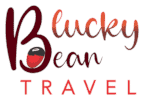Holiday destinations in Namibia are full of contrasts. Namibia is a beautiful but arid land on Africa’s south-west coast.
From the seashore and sandy beaches to majestic sand dunes and the greener but rugged interior, it is an inviting country to travel to with good transportation and easy access.
Namibia has the distinction of being one of the most scarcely populated countries in the world. It is a top-notch photographic and adventure destination for people who enjoy nature, majestic landscapes, gigantic sand dunes, and incredible wildlife viewing in some of the most fascinating conservation areas the world has to offer.
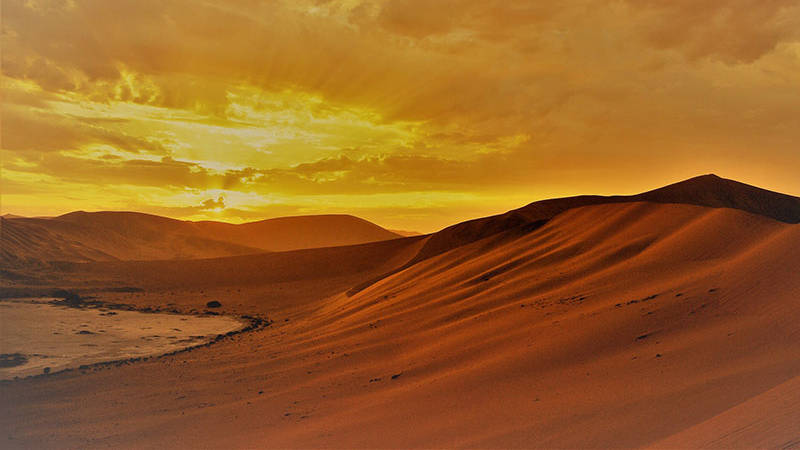
A Selection of Some of The Top Holiday Destinations in Namibia Are:
Windhoek
Windhoek is the capital city of Namibia with a population of around 300,000. The city has a charming ethnic and European charm.
Windhoek has a few places of interest including the Christuschurch, the Tintenpalast (seat of the government), the old fort, the monument of the German rider, museums, and galleries. The city offers excellent shopping opportunities and offers quality restaurants.
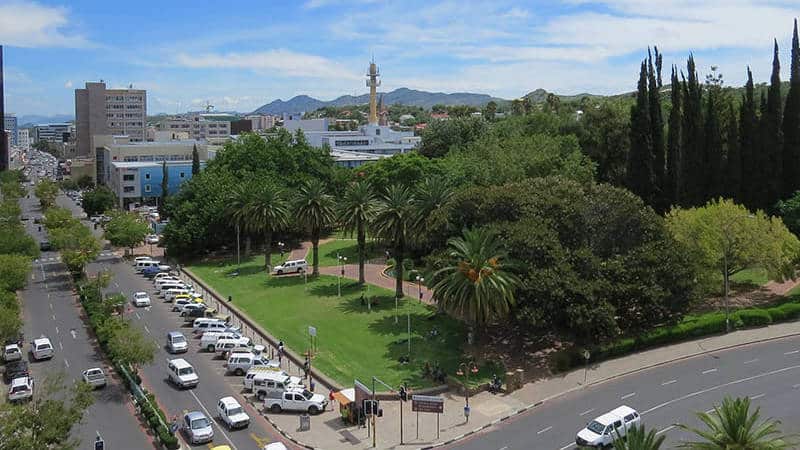
Swakopmund
Swakopmund is situated on Namibia’s coastline and is the capital of the Erongo Region with a population of about 34,000. It is the biggest coastal town in Namibia and a popular beach holiday destination for Namibians and tourists alike.
You will see evidence of the cities German origins everywhere. There are many beautiful old German Colonial buildings found within the city and a relaxed ambience makes sightseeing and shopping a relaxing pastime. The aquarium, museum, and street market are well worth a visit.
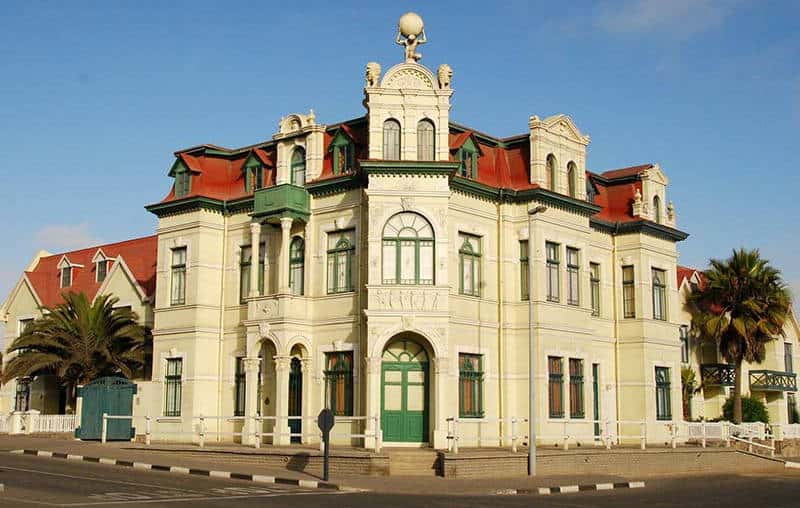
The Namib Desert starts right from the edge of town with the outstanding sand dunes offering many activities for the adventurous. Swakopmund is the activity centre of Namibia with sandboarding, horse riding, and quad biking safaris available as well as the wide-open beaches providing plenty of surf and sand.
Accommodation is plentiful in this tourist destination.
Sossusvlei
The name Sossusvlei is derived from the Afrikaans word “vlei” which means pan and “sossus” from the Nama language meaning blind river. The river referred to is the Tsauchab River, which when in flood does not even reach the coastline 50km away but instead just seeps away in the desert.
Found in the Namib Desert the Sossusvlei is an enormous salt-clay pan surrounded by the 300-metre high sand dunes that are red in colour. These sand dunes – which are the largest in the world – are fascinating as the colours constantly change during the sunrise and sunset hours making for magnificent photographic opportunities.
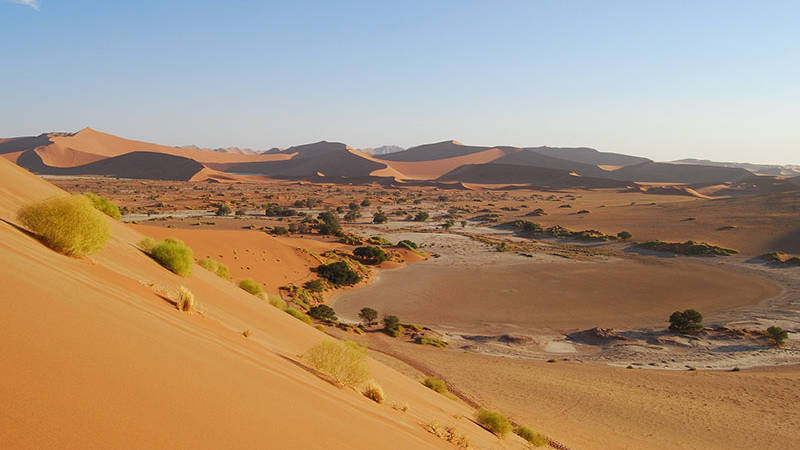
The ever-present desert winds are continually changing the shapes of the dunes, making for a continually changing desert landscape from day to day.
Approximately every ten years, after exceptional rains, the Tsauchab river fills the clay pan with water and forms a lake. The turquoise water creates a beautiful contrast to the surrounding dune landscape during its short and sporadic occurrence.
Dead Vlei
Not far from the Sossusvlei lies Dead Vlei – which is just as impressive. Completely separated by a large sand dune from the Tsauchab River, the vlei is famous for the long-dead camelthorn trees which have been preserved by the extremely dry climate.
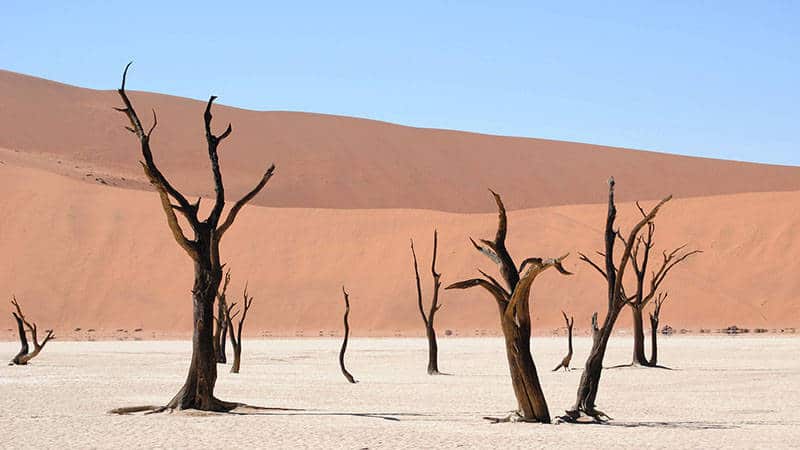
On the edge of the vlei, there is the highest sand dune worldwide called the “Big Daddy” or “Crazy Dune”.
Experiencing the scene firsthand is the only way to understand the beauty of the area.
Fish River Canyon
The Fish River Canyon is the world’s second-biggest canyon with the Grand Canyon in America claiming first place. Found in Southern Namibia its magnificent beauty and breathtaking immensity is breathtaking. The canyon’s gigantic ravine is 161 km long, 27 km wide and up to 550m deep.
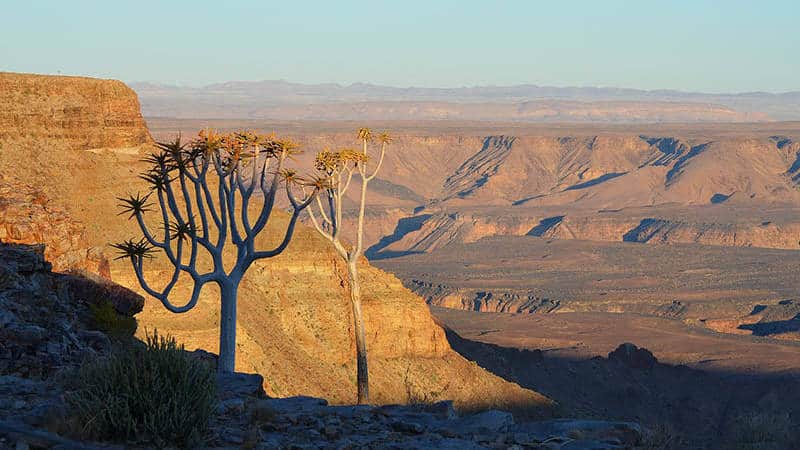
The Fish River is 800 kilometres long and the longest river in Namibia. The canyon is found at the lower course of this river with the river then flowing into the Orange River and into South Africa.
The Canyon hike is closed during the summer months due to the excessive heat. The Fish River Hiking Trail is open during the months of April to September. The hike covers a length of 85 km with day-visitors not allowed to climb into the Canyon.
Etosha National Park
The Etosha National Park is found in northern Namibia and is one of the most important and well-known game reserves in Africa. The Park covers an area of nearly 22.912 km² and is completely fenced for the protection of the animals. In the eastern part of the park is a large salt pan approximately 5.000 km² which was formed about 2 million years ago.
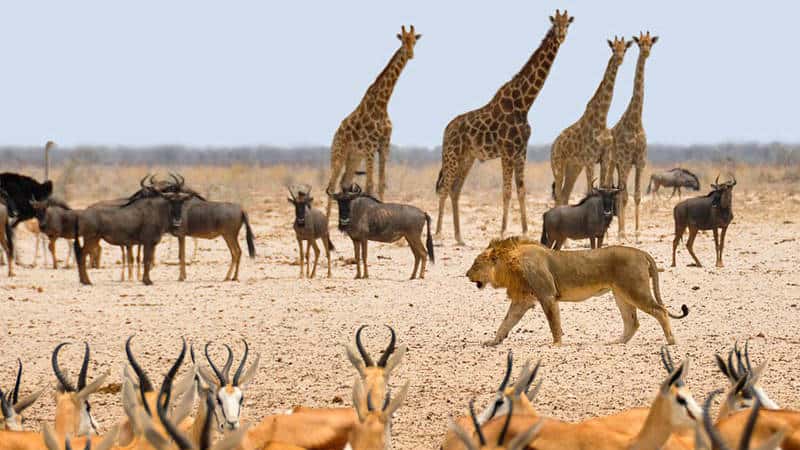
Etosha means “big, white place” and is taken from the local Oshiwambo language.
The Park is centred around the vast Etosha salt pan. This pan is usually dry and only fills with water briefly in the summer months. Most of the wildlife can be seen during these few months around the pan and its various waterholes. This wildlife includes herds of zebra, wildebeest, antelope, and plains game. An incredible 100 mammal species and an additional 340 different species of birds are in the park. This includes the flamingo which is lured into the pan by the algae that grow with the influx of these summer waters.
Caprivi Strip
The Caprivi Strip is found in the northeast of Namibia and is a narrow strip of land between Botswana, Angola and Zambia, and Namibia’s Okavango Region. The Caprivi is blessed with high rainfall and is the wettest region in Namibia with major rivers like the Okavango, Kwando, and the famous Zambezi River nearby which carry water year-round.
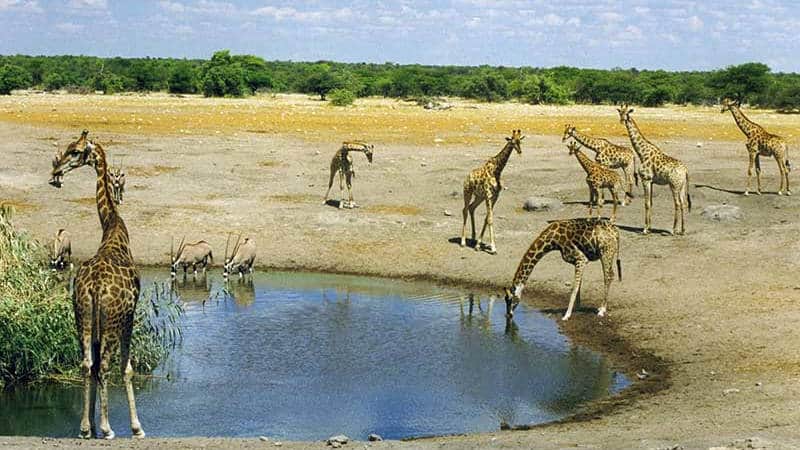
This abundance of water supports a large wildlife population, including big herds of elephants. Other species include buffalo, hippo and crocodile, lion, leopard, African wild dog, bushbuck, zebra, kudu, sable and roan antelope, waterbuck, sitatunga, lechwe, impala, and a large bird species with over 450 varieties.
This wildlife is protected in four reserves with the animals roaming freely across the neighbouring countries borders as there are no fences. Three national parks in the area are Bwabwata, Mudumu, and Mamili National Park.
Skeleton Coast
The Skeleton Coast is a stretch of coastline along the northern coast of Namibia facing the Atlantic Ocean. It is 40 kilometres wide and 500 kilometres long and is a fascinating but hostile area.
The cold and fickle Benguela Current of the Atlantic Ocean meets the desert landscape of Namibia and is known for dense fogs, storms, and violent surf. This fact has caused many ships to run aground over the years building the reputation as the world’s biggest ship graveyard.
The sailors who managed to make it to land, unfortunately, did not stand a chance of survival on this inhospitable coast, ultimately dying of thirst.
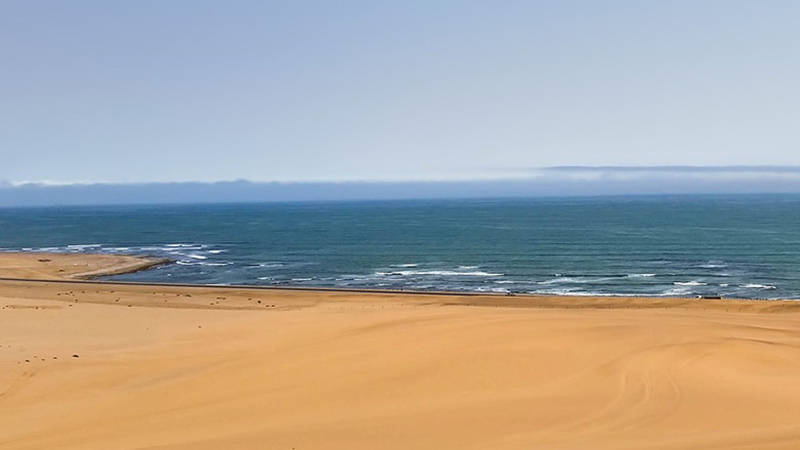
There are also large numbers of stranded whales that have lost their lives on this coastline due to the currents and rough seas – their skeletons can be seen all along the coast.
But despite the Skeleton Coast’s hostile characteristics, surprisingly, there are plenty of wild animals to be found. Notably the desert elephants. They can be found walking on the beaches and swimming in the surf – an unusual site. Other wildlife includes rhinos, jackals, giraffes, desert lions, brown hyenas, oryx, kudus, zebras, and of course, seals.
Amazingly, plants have adapted to this area of the Skeleton Coast and are solely dependent on the daily fog from the Atlantic Ocean. These include Nara melons, welwitschias, several types of lithops (succulent plants known as “living stones”), lichen, and pencil bush.
The coast north of Terrace Bay, which is dominated by high sand dunes, is the most attractive stretch of the Skeleton Coast.
Other Holiday Destinations in Namibia and Places of Interest
Other places of interest are Kolmanskop – a ghost town, Twyfelfontein – rock engravings, Spitzkoppe – granite rocks, and Cape Cross – a seal colony.
